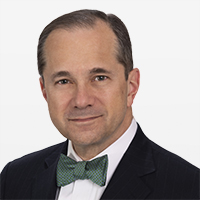Tag Archives: equal weight
Diversification, Equity & Indices
The results of S&P DJI’s latest SPIVA U.S. Scorecard are in: Most large-cap active managers underperformed the S&P 500® for the 14th consecutive year in a row. 60% of active large-cap funds underperformed the S&P 500 in 2023, slightly better than the long-term average of 64%, and a relatively benign result considering the dominance of…
Magnificent Mid Caps and Sensational Small Caps
U.S. equities rose in 2023, with the mega-cap “Magnificent Seven” driving most of the S&P Composite 1500®’s 25% gain. While mega caps continued to outperform in January 2024, not all seven of the aforementioned group ranked highly. This has led to some market commentators looking to coin new phrases: “Sensational Six” or “Super Six” (the…
- Categories Equities
- Other Tags
An Elevating Effect on Equal Weight?
The trouncing of smaller caps by mega-cap stocks has been one of the hallmark market themes of this year, with the S&P 500® Top 50 outpacing the S&P SmallCap 600® by 30% YTD.1 As a result of its inherent small-cap bias, the S&P 500 Equal Weight Index (EWI) has suffered accordingly, underperforming the S&P 500…
- Categories Equities
- Other Tags
- Categories
- Equities
- Other Tags
Mean Reversion
Over more than 20 years of live history, the S&P 500® Equal Weight Index has outperformed the S&P 500 by a substantial margin. Between Dec. 31, 1990, and June 30, 2023, Equal Weight’s compound annual growth rate was 11.82%, well ahead of the cap-weighted S&P 500 at 10.55%. This performance edge is a product of…
- Categories Equities, Factors, S&P 500 & DJIA
- Other Tags
Towering Tech
The performance of large-cap Technology stocks so far this year has been exceptional, with the S&P 500® Information Technology sector outperforming the S&P 500 by 26% over the six-month period ending June 30, 2023—the 97th percentile of all observations in our database. Tech’s outperformance, driven by mega-cap strength, has been especially notable because of its…
- Categories Equities
- Other Tags
Lessons from 20 Years of Equal Weight
How has equal-weight compared with cap-weight historically? S&P DJI’s Hamish Preston and Invesco’s Nick Kalivas explore how differences in index construction have influenced index performance, sector and factor composition, and results in the latest SPIVA Scorecards.
Equally Weighting within Sectors: Impact and Potential Applications
The outperformance of equal weight indices is well documented, especially for the S&P 500® Equal Weight Index’s 20 years of live history. Equal Weight’s relative returns reflect the impact of several important index characteristics. For example, smaller-size exposure and (anti-) momentum effects together account for around 75% of the historical variation of its relative returns….
Celebrating 20 Years of the S&P 500 Equal Weight Index
The S&P 500® Equal Weight Index launched on Jan. 8, 2003, so Sunday marked 20 years since the index first allowed investors to measure the performance of egalitarian allocations among S&P 500 constituents. The index is now tracked by various investment products globally, and it has potential benchmarking applications. Exhibit 1 shows that the S&P…
- Other Tags
Examining Equal Weight
In this tumultuous market characterized by Fed rate hikes, elevated inflation and a strong dollar, mega-cap growth companies have suffered heavy losses, paced by recent “Big Tech” earnings disappointments from Meta, Microsoft, Alphabet, Amazon and others. The S&P 500® Top 50 declined by 19% over the past 12 months, underperforming the S&P 500 by 5%….
- Other Tags
Watch Your Weighting Scheme
2022 has witnessed a recalibration across financial markets, as investors have digested the impact of higher interest rates amid elevated inflation. Despite bouts of optimism that the U.S. Federal Reserve would take a more dovish stance, and better-than-expected corporate earnings, Exhibit 1 shows that the vast majority of large-, mid- and small-cap indices declined through…













































